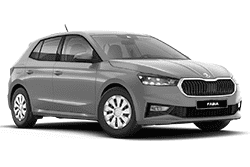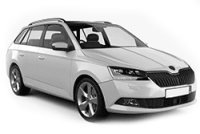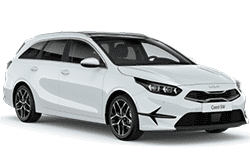Almost in all EU countries highways are chargeable. However, there are lower class roads and in case your route does not presuppose driving on highways you do not need to pay. The Austrian highways for our cars are already paid for (it doesn't cover 6 toll sections, paid additionally before entering). There are two methods of payment for highways valid in the EU: vignette and on the spot.
Method №1: Vignette
A vignette allows a barrier-free entry to a highway and involves the need to prepay roads for a certain period of time (from several days to a year) without a distance limitation.
This method is used in Austria, Czech Republic, Slovakia, Hungary, Slovenia and Switzerland (Romania and Bulgaria are not mentioned here because it is prohibited to go there on a rental car). In this case before entering the highway you need to buy a special sticker (vignette) and attach it to the windshield thus indicating the highway payment. Vignettes (toll stickers) can be bought directly at the border, but it is better to do it in advance, at any border gas station.
You can buy vignettes for different periods: from 10 days to a year. A minimum 10-day vignette costs from 9 to 15 euros depending on the country. The Swiss vignette is sold only for a period of a year and costs 40 Swiss francs (35 euros). The vignette has two parts: the slip and the main part which is attached to the windshield from the inside to the place indicated schematically on the vignette itself. You should keep the vignette slip for the validity period of the vignette. Sometimes it is necessary to write the number of the car on a vignette.
Electronic vignettes and stickers
In Austria a vignette can be attached to the windshield or it can be an electronic one. In the Czech Republic, Slovakia and Hungary electronic ones are used, i.e. there is no sticker, but the car is entered into the electronic database and you receive a check confirming the highway payment. But in Slovenia and Switzerland vignettes are sold only in form of a sticker, there are no electronic versions yet.
A presence of the sticker is controlled only by police officers there, but in Austria, the Czech Republic, Hungary and Slovakia (where the electronic vignette is needed), the control is also carried out by cameras.
Method №2: On the spot
The second method presupposes a barrier at the entrance and exit from the paid part of the highway and payment for each trip depending on the distance covered.
This method (on the spot) is used in Croatia, Italy, France, Poland and other more distant EU countries. At the entrance to the paid section of the road there is a barrier, before approaching it you take a ticket (like at parking lots), and before leaving the paid road section you make the ticket-based payment depending on the distance covered. Sometimes at the entrance there are raised barriers and there is an opportunity to enter the paid section without taking a ticket - this should not be done in any case - most likely, at the exit the barrier will be closed, and you will have to pay a penalty for the unauthorized entry to the paid section.
In Germany highways are free but to enter some city centers you need a sticker that attests the payment of the environmental fee. All our cars are equipped with these stickers.
Fines for travel on highways without payment
These fines differ from country to country and start from 200 euros! Almost in each mentioned EU country, apart from state highways, there are also sections of private roads that are paid separately. They are not numerous (usually it is less used tunnels or tourist roads) and the entrances to such areas are usually equipped with a barrier.
To sum it up we would like to pay special attention to the fact that the highway fee is very small in comparison with the fines for the absence of a vignette. There is no point in risking several hundred euros to save 10-20 euros. Vignettes are better to buy in advance because there can be no place to buy them before entering the highway or they can be unavailable.
Back to main page Vienna rent a car.






